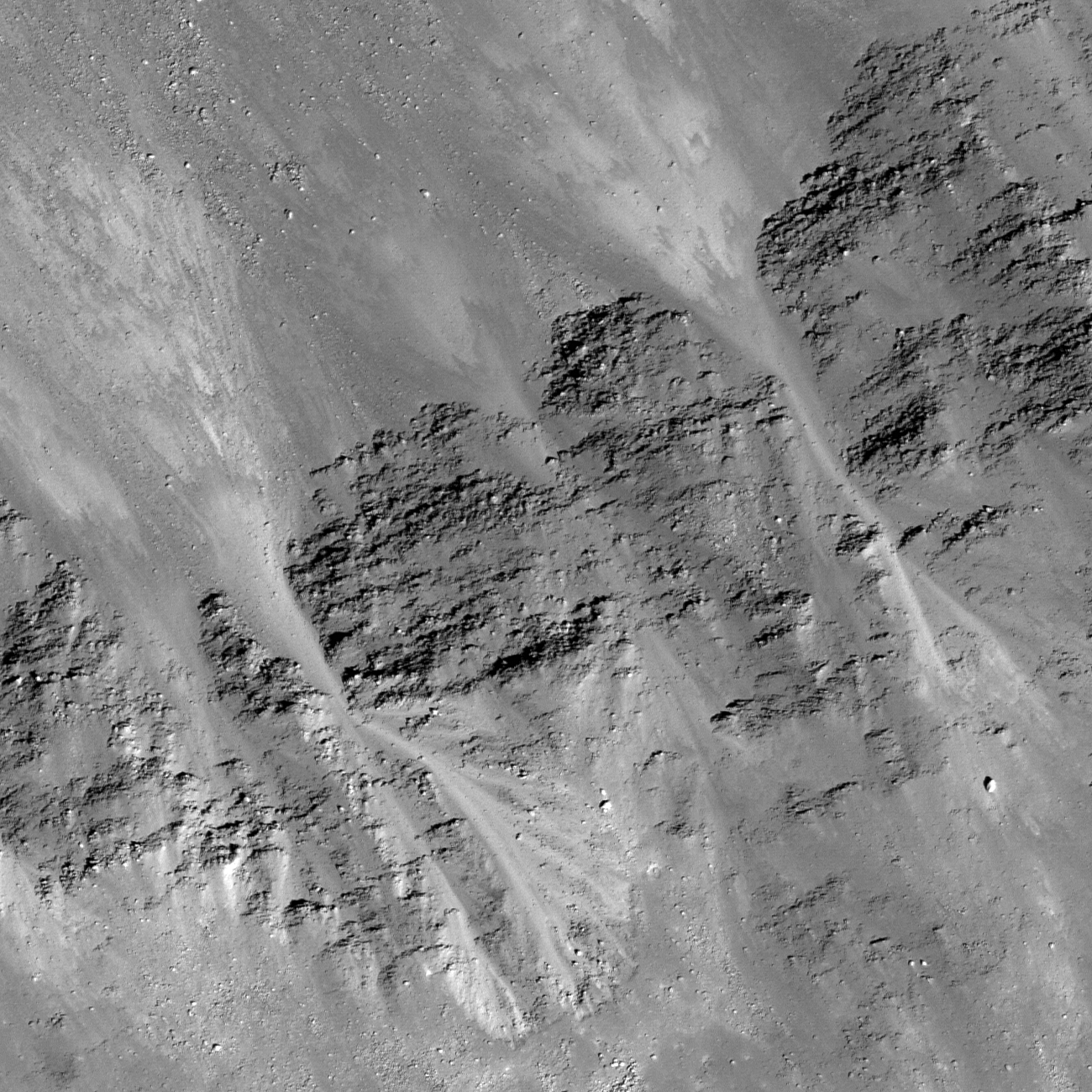
The wall of Dawes crater (17.21°N, 26.32°E) contains sections of spectacular mare basalt layering. However, mass wasting, a geologic process where material moves downhill due to gravity, has started to partially cover these beautiful outcrops. Granular flows started above the outcrop and then flowed down the interior crater wall. As seen in the Featured Image, the topography of basalt outcrop caused the flow to deviate into narrow paths, away from a simple path flowing straight down the crater wall. As the crater Dawes ages over billions of years, the mare basalt outcrop will eventually be completely covered with granular material due to slumping of the crater's walls and more mass wasting.
Explore the entire NAC frame!
Related posts:
Published by Sarah Braden on 25 January 2012
